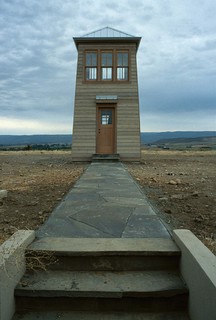Undersize AC for Efficientcy
One of the best reasons for upgrading to a new home is the super efficient systems that are avialable today for homes, such as Geothermal HVAC systems. One of our customers has a payback of 7 month to make the system pay for itself. Below is an article that blows away the old idea of how to power and cool your home, learn less is more and why.
Tim Allen’s character on the 90s TV show “Home Improvement” was famous for solving problems with more power! But when it comes to providing proper summer dehumidification so the papers on your desk don’t stick together and you don’t need to keep a stick of antiperspirant in your desk drawer, you’re better off to let your air-conditioning do the sweating. A system properly matched to cooling loads, or even slightly undersized, will dehumidify better because it will run longer, exposing cold coils to the damp airstream for more hours of the day; removing more water (aka, “humidity”)from the airstream. An oversized system, on the other hand, will cycle-on, quickly satisfy the thermostat setting set-point, and then cycle-off allowing the coils to warm and re-evaporating much of the water back to into the air. The result can be cool clammy air – think basement with no dehumidifier, or a cave.

Why does this happen? Doesn’t the thermostat keep the air-conditioner running until it is comfortable inside? This is only partially true. The thermostat only monitors the temperature of the space so the relative humidity could swing from 50% to 75% and nothing will change. This can have considerable impacts on comfort. The red arrow in the figure (ASHRAE Comfort Chart) represents a thermostat setting of 75 degrees with an increase in space humidity that could result from gross system over-sizing. Conditions outside the shaded area indicate that a large number of occupants would be uncomfortable. Sure, you could solve the problem by installing a humidistat and some re-heat coils, but that is not routinely done and it certainly wastes energy when it is.
You might be concerned that your slightly undersized system will not keep your space cool on scorching hot days. Usually, the worst conditions (design days) only persists for a few hours. On design days, the system will tend to run continuously. If, during the morning, the system effectively cools the building, it may take awhile at afternoon design conditions for indoor temperatures to rise. All the while humidity levels will be relatively dry. Furthermore, since comfort is often perceived relative to outdoor conditions, on the very warmest, muggiest days, occupants will feel comfortable at slightly elevated temperatures.
Now take a look at the graph “Zone Humidity Ratio vs. Cooling Oversizing for Three Zones”. These results are from computer simulations of office spaces under somewhat ideal conditions. The graph makes the over-sizing effect look quite dramatic, though it amounts to only about three to five additional percentage points of relative humidity. And if you factor in the additional risk of freezing your coil on a hot day, then the performance impact will be dramatic indeed.
The point is that over-sizing your system is going to cost you more for a bigger unit and deliver poorer performance. More first cost; more operating cost: Crazy! Ask your mechanical contractor to perform a loads analysis before installing equipment. “More power!” is not always better.
Call us for more details about the new products that are available for new homes.

Craig Fairbanks
www.CraigFairbanksHomes.com
319-553-1457
Link to article is below
Dehumidificationhttp://www.michaelsenergy.com/energy-briefs/hvac/undersize-ac-for-efficient-dehumidification/
Meet the Author

Chris Pinkowski is an Energy Engineer at Michaels Energy. For more information about this topic or additional energy concerns, please contact Chris at (608) 785-1900 or CRP@MichaelsEnergy.com



 Why does this happen? Doesn’t the thermostat keep the air-conditioner running until it is comfortable inside? This is only partially true. The thermostat only monitors the temperature of the space so the relative humidity could swing from 50% to 75% and nothing will change. This can have considerable impacts on comfort. The red arrow in the figure (ASHRAE Comfort Chart) represents a thermostat setting of 75 degrees with an increase in space humidity that could result from gross system over-sizing. Conditions outside the shaded area indicate that a large number of occupants would be uncomfortable. Sure, you could solve the problem by installing a humidistat and some re-heat coils, but that is not routinely done and it certainly wastes energy when it is.
Why does this happen? Doesn’t the thermostat keep the air-conditioner running until it is comfortable inside? This is only partially true. The thermostat only monitors the temperature of the space so the relative humidity could swing from 50% to 75% and nothing will change. This can have considerable impacts on comfort. The red arrow in the figure (ASHRAE Comfort Chart) represents a thermostat setting of 75 degrees with an increase in space humidity that could result from gross system over-sizing. Conditions outside the shaded area indicate that a large number of occupants would be uncomfortable. Sure, you could solve the problem by installing a humidistat and some re-heat coils, but that is not routinely done and it certainly wastes energy when it is.
 Chris Pinkowski is an Energy Engineer at Michaels Energy. For more information about this topic or additional energy concerns, please contact Chris at (608) 785-1900 or CRP@MichaelsEnergy.com
Chris Pinkowski is an Energy Engineer at Michaels Energy. For more information about this topic or additional energy concerns, please contact Chris at (608) 785-1900 or CRP@MichaelsEnergy.com